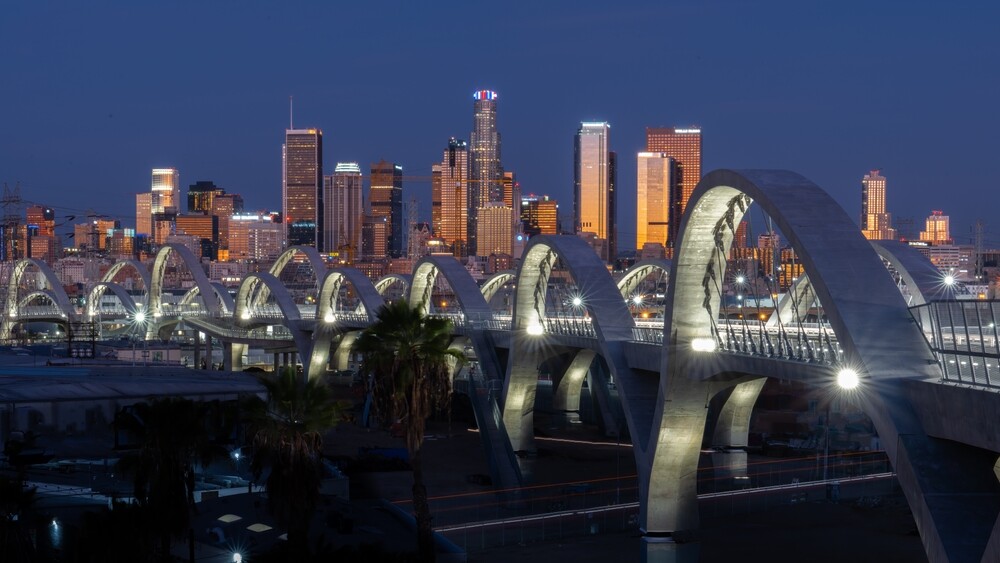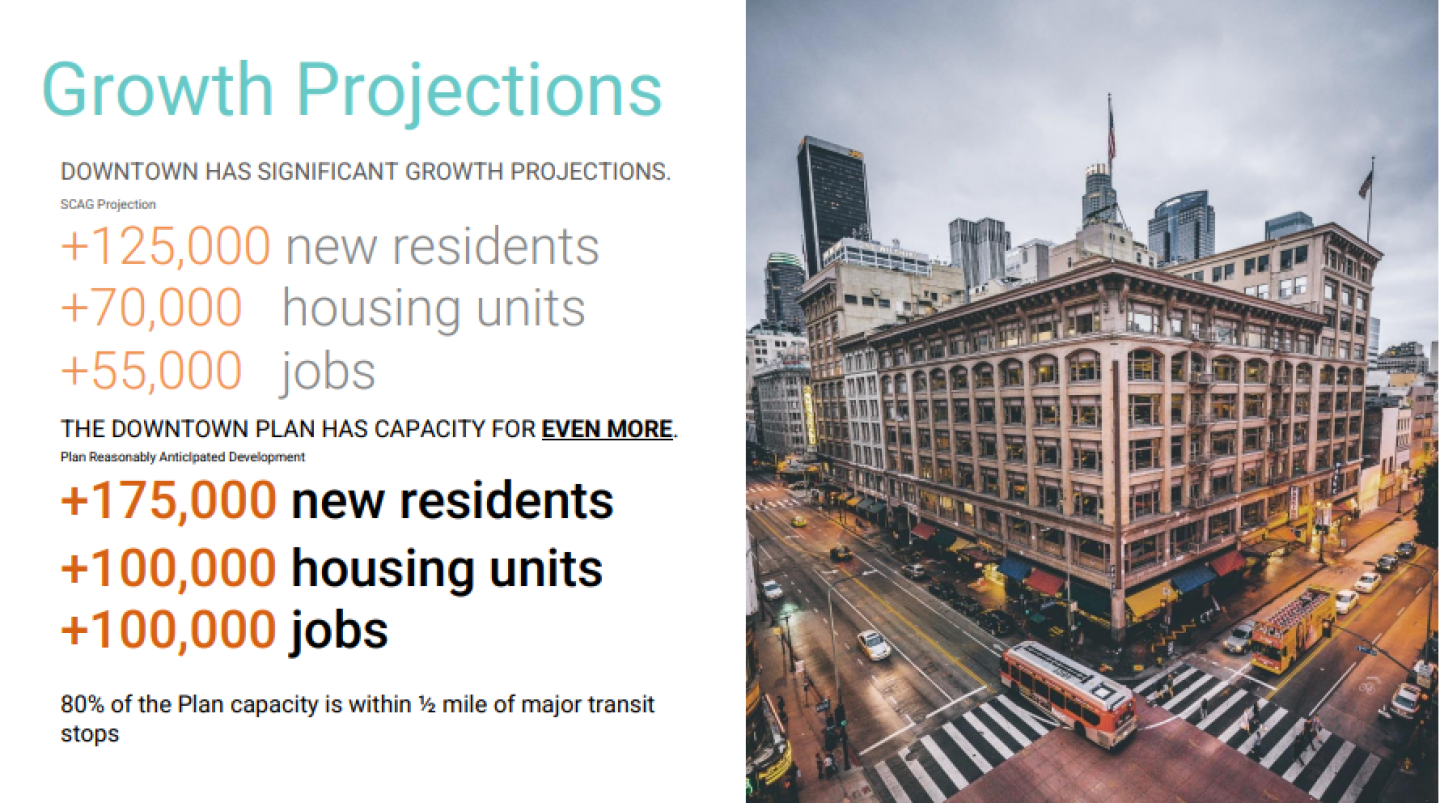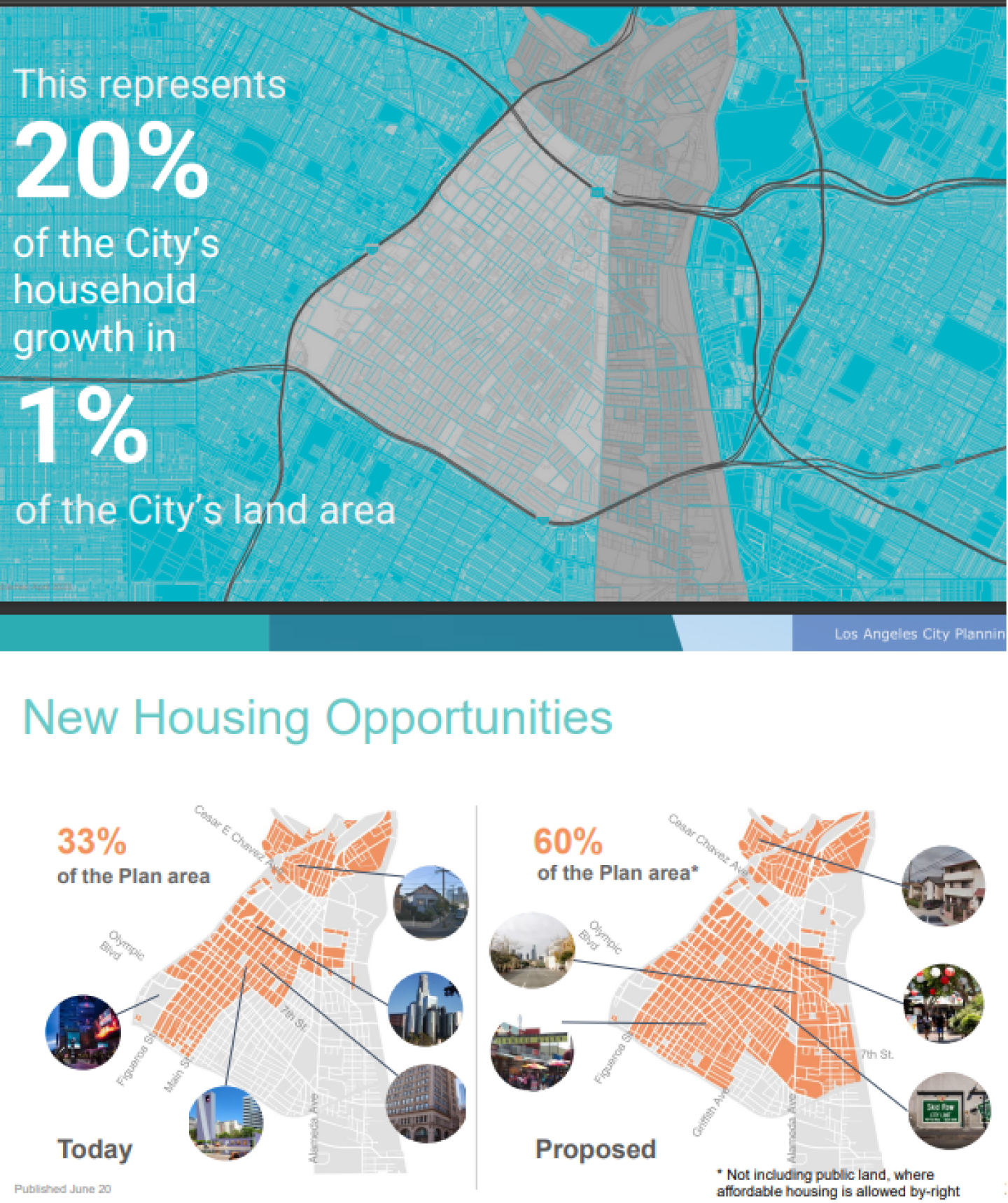As cities confront the housing crisis, they face intersecting challenges: opposition not only to affordable-housing development but often to any development; spiraling financing and construction costs; outdated zoning that stifles or misplaces growth; egregious bureaucratic barriers; and issues around displacement and historic preservation. But some cities have an asset that can serve as a testing ground for harmonizing urgent priorities: their downtown districts.
Downtown Los Angeles (DTLA), often a laboratory of ideas for growth (not always good ideas), has the appetite, resources, and room to expand, and will soon launch one the most ambitious plans for a downtown district in the nation—the DTLA Community Plan Update, also known as DTLA 2040, which will implement a vision for Downtown Los Angeles.
At the Los Angeles headquarters of KTGY (in the historic, restored Trust building), ULI Los Angeles recently offered a “meet and greet” preview of this plan to a sold-out audience of developers, financers, designers, and stakeholders. Presenting the Community Plan Update were Clare Kelley, Associate Director of Planning Policy and Development, City of Los Angeles Mayor’s Office of Business and Economic Development (Kelley previously worked as a city planner in the Los Angeles City Planning Department and contributed to development of the plan); Garrett Rapsilber, Director, HR&A Advisors; and Mark Oberholzer, AIA, LEED AP, Principal, KTGY. These three covered a lot of ground in describing how this years-in-the-making plan may unlock the balanced growth the city needs.
In introducing the panel and interacting with the audience, KTGY’s Oberholzer noted essential advantages to the plan, stating, “This updated vision for the central core of Los Angeles encourages a much greater diversity of types of development. Many recent projects in the central core are within a very narrow band of the commercial real estate market. But this new zoning, while more complex, creates multiple pathways for many different types of urban projects which over time will create more vibrancy and development opportunities.”
Kelley agreed, saying, “The new zoning system, developed to implement the plan, is more transparent and tailored to meet the needs of downtown. On the surface it may look compl ex , but it’s actually streamlined and efficient. The new system’s goals are clearly laid out. The zone will tell you what can be built on the property. And flexibility within the process incorporates standardization of planning with the need for specialization. For example, it accommodates transportation infrastructure throughout the district.”
DTLA is projected to do most of Los Angeles’ heavy lifting for growth, with or without the plan. Southern California Association of Governments (SCAG) projects 125,000 new residents, 70,000 new housing units and 55,000 new jobs in DTLA by 2040. This constitutes 20 percent of the entire city’s household growth in just 1 percent of its land area. DTLA 2024 envisions these trends and overaccommodates them with the goal of optimizing integration and efficiency. It projects a district with 175,000 new residents, 100,000 new units, and 100,000 added jobs.
As of May 2023, the DTLA Community Plan Update is approved by Los Angeles City Council and is now in its implementation phase. Kelley said it is going through zoning review and will return to the council for final adoption at the end of this year. In addition to accommodating an overall need for enlightened, flexible growth, the plan’s boost to housing density fulfils an important part of the city’s obligation for increased housing under state law.
A four-part plan
The four main components of the DTLA Plan Update are: a policy document (which outlines vision, policies, and implementation programs), a plan map (which sets range of uses and intensities), a zoning program (which establishes regulations, use allowance processes and permissions, base and maximum floor area ratios, etc.), and an implementation overlay (which outines design best practices and other development standards). This is where the community benefits can be found, said Rapsilber of HR&A Advisors.
The city spoke with thousands of stakeholders to come up with the overriding theme for the project, “A Downtown for All.” To those who assume organized opposition will doom the plan from the start, Kelley notes that diverse communities across the DTLA district share common concerns about affordability, accessibility, and sustainability. DTLA 2024 improves access to housing, jobs, cultural and educational opportunities and adds safeguards for existing communities.
It also includes, according to Kelley, “a response to climate change, correcting the inequities of a shifting economy, and a celebration of DTLA’s unique history.” City Council’s approval is proof of the plan’s broad support: “Development discussions can be contentious, but DTLA has remarkably higher levels of consensus. There is broad agreement about the benefits of planned growth.”
The plan area is bounded by the 110 and 101 Freeways on the west and north, the Los Angeles River on the east, and the City of Vernon on the south. This, of course, includes the Central Business District with its high-rises, offices, residences, and storefronts, but it also extends deeply east, covering a diverse range of districts including Skid Row and neighborhoods with industrial, fashion, wholesale, arts, and other uses including residential development. Since the 1980s, DTLA has been covered by two different community plans, which will be united under DTLA 2040.
The plan goes to great lengths to address potential displacement due to gentrification as downtown is redeveloped. It addresses gentrification and coordinates other community needs with “community benefit systems” requiring developers planning high-density projects to build much-needed onsite affordable housing. Developers can receive even greater density allowances if they choose to provide additional community benefits from an expansive menu of items like public open space and space for services like health clinics or childcare. Rapsilber and the consultant team worked with the city to analyze 10 different submarkets, each with different criteria, guidelines, and prototypes to right-size this system with enough adaptability to suit various neighborhood contexts. “We took a long-term view,” he said.
The plan has housing incentives that extend beyond its community benefit systems. Today “by-right” housing (which allows approval without lengthy zoning and building hurdles) is allowed in just 33 percent of the plan area. DTLA 2040 proposes 60 percent of the plan area to allow by-right housing. It also combines the need for housing with opportunities for job growth by supporting combinations of housing and commercial development. Today 80 percent of the plan area is single use. DTLA 2040 proposes single use for just 36 percent of the plan area.
“This last piece is a critical part of the plan and expresses the vision of a downtown for all,” Rapsilber said.
“This is a tiered system offering on-site community services, open space, affordable housing and other needs,” said Kelley. “The rules are very clearly laid out and can speed planning-department approval through a simple review process; projects that meet zoning and environmental standards will not need to complete review under the California Environmental Quality Act.” (CEQA being a notorious nemesis of California developers.)
Downtown Los Angeles is primed for explosive growth, and the city has taken a trailblazing approach with DTLA 2024 by anticipating and guiding its development to maximize community good. “This means significant savings in cost and improvement in feasibility,” Kelley said. “And feasibility unlocks potential.”








